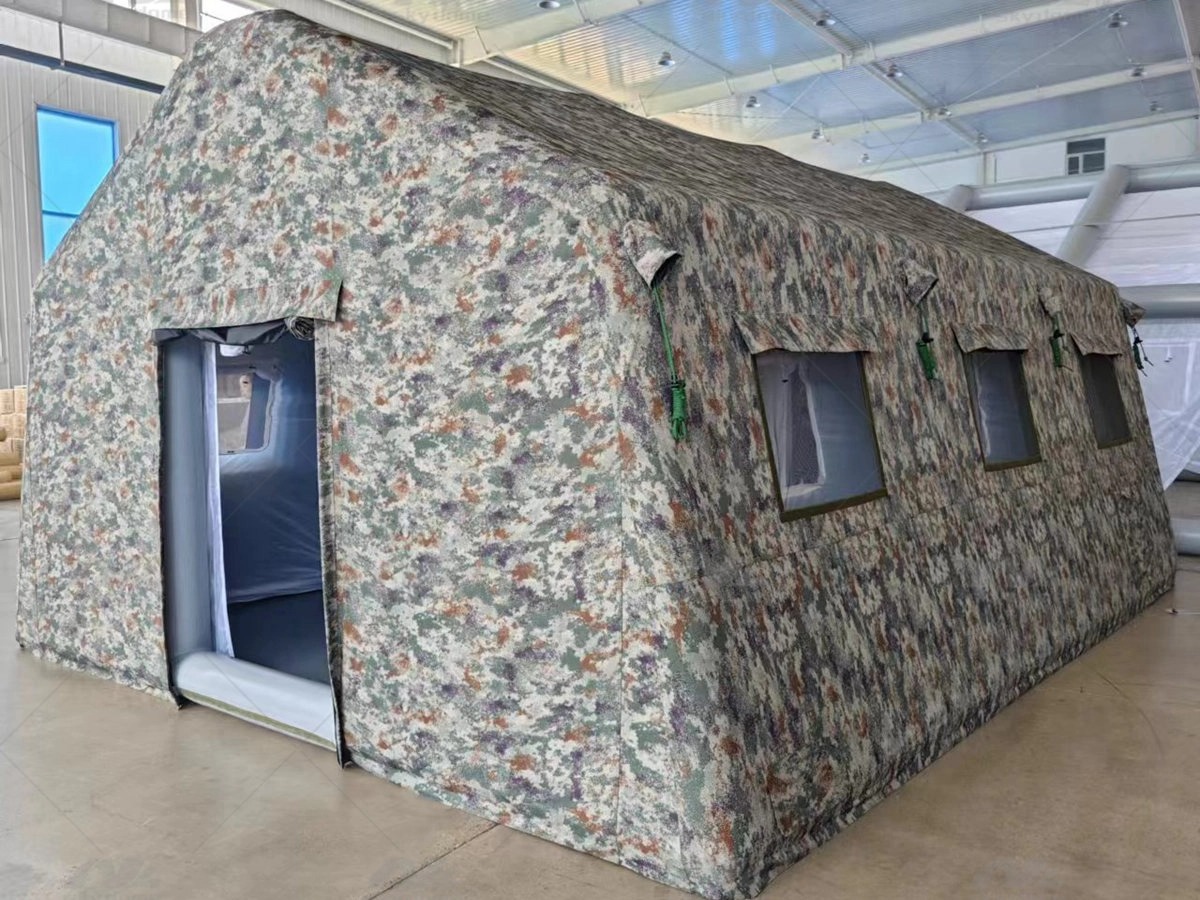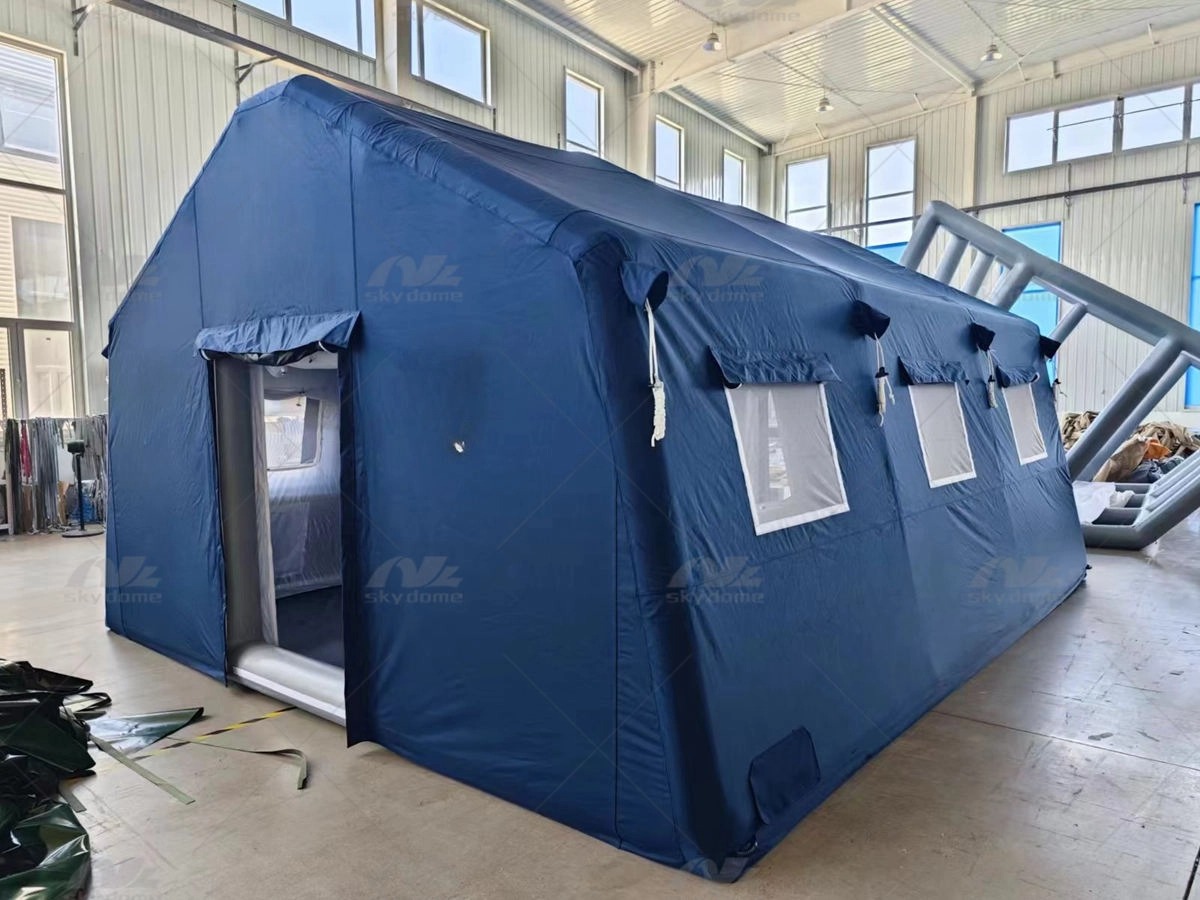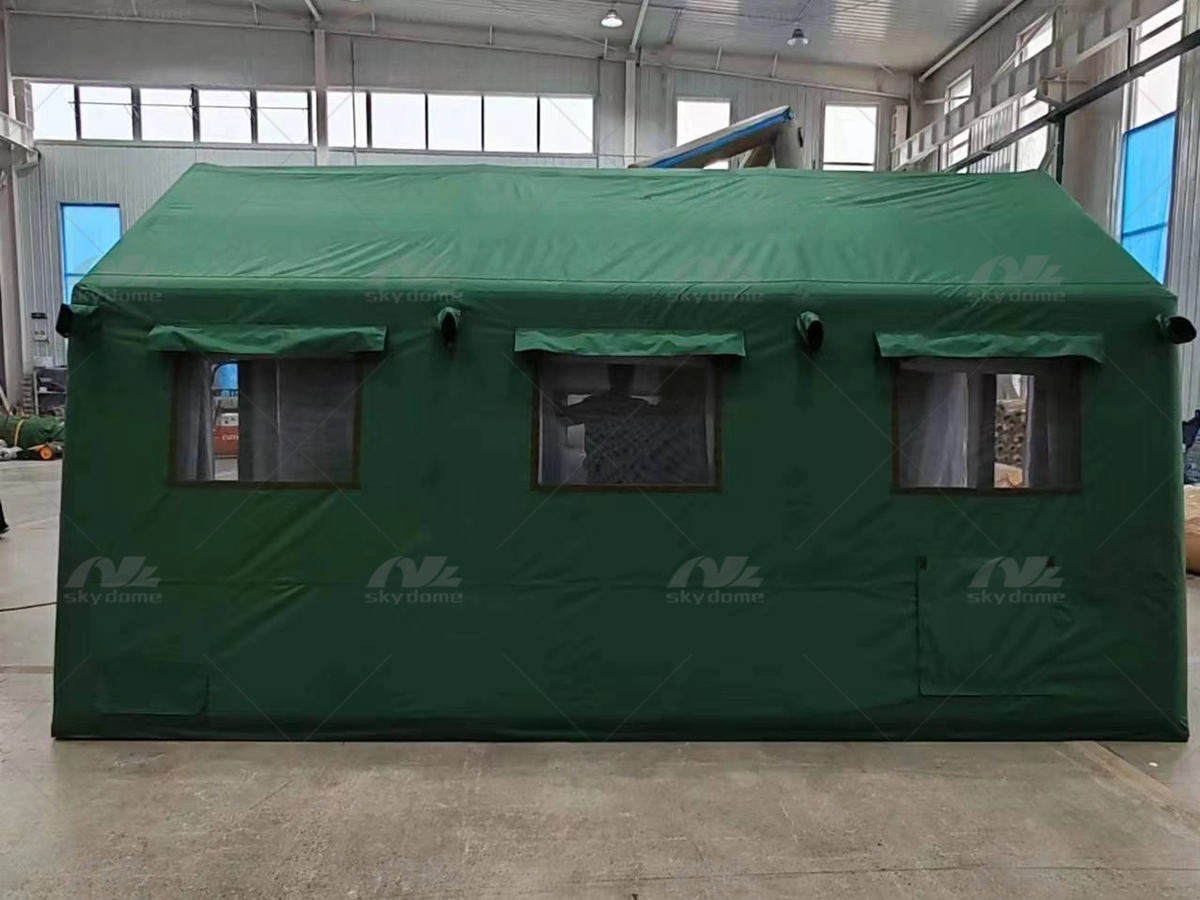
Introduction
Inflatable tents have become a popular alternative to traditional tents, thanks to their convenience, modern design, and quick setup. These air-supported shelters, including variants such as the air membrane inflatable tent, outdoor inflatable tent, and inflatable camping tent, are frequently chosen for everything from weekend getaways to organized outdoor events. However, a pressing concern often arises among potential users: What happens if an inflatable tent punctures during a storm? This question is not only relevant but essential for ensuring safety and preparedness in unpredictable weather conditions. In this comprehensive article, we will delve deep into the mechanics of inflatable tents, potential storm-related vulnerabilities, puncture response strategies, and essential FAQs.
How Do Inflatable Tents Work?
Inflatable tents rely on a framework of air beams rather than metal or fiberglass poles. These air beams are pressurized to create a rigid structure that maintains the tent's form. The air membrane inflatable tent design is often reinforced with multiple chambers, allowing for segmented inflation and added stability.
The beams are made from durable, puncture-resistant materials such as TPU (thermoplastic polyurethane) or reinforced PVC, which are designed to withstand outdoor challenges. Once inflated, these beams support the tent in a similar way poles would in conventional tents. Many inflatable tents for temporary outdoor activities include pressure-release valves to protect the structure from over-inflation or pressure surges during high temperatures or storms.
But no matter how robust the materials are, extreme environmental conditions like sharp debris carried by wind, falling branches, or intense hail can challenge the integrity of any tent, inflatable or not.
The Impact of a Puncture During a Storm
Immediate Structural Response
When an inflatable camping tent gets punctured during a storm, the result depends largely on the size and location of the puncture. A small leak in a non-crucial area may result in a slow loss of pressure, causing minor sagging over time. However, a large tear or a rupture in a load-bearing air beam may lead to rapid deflation and partial or total structural collapse.
In many modern tents, the multi-chamber design provides a built-in safety mechanism. Each beam can function somewhat independently, so even if one section fails, the rest of the tent may remain upright long enough for occupants to evacuate or perform emergency repairs. Nevertheless, if the storm is severe, the combined forces of wind and rain can further destabilize the structure.
Risks to Occupants and Equipment
A collapsing inflatable tent in storm conditions poses several risks. First, the structural failure can lead to water ingress, soaking sleeping bags, electronics, and other valuables. More critically, falling debris from nearby trees can become a hazard when the tent’s ability to absorb shock is compromised. The psychological stress of a failing shelter during an intense weather event cannot be underestimated, especially if children or elderly individuals are present.
| Puncture Severity | Typical Outcome | Occupant Risk Level | Recommended Action |
| Small Leak | Minor sagging | Low | Apply repair patch immediately |
| Medium Tear | Partial collapse | Moderate | Evacuate, repair if possible |
| Major Rupture | Full deflation | High | Evacuate and seek shelter |
Emergency Measures: What Should You Do?
Step-by-Step Emergency Protocol
If your inflatable tent punctures during a storm, acting quickly and calmly is critical. Here’s what you should do:
Identify the leak: Locate the source of the air loss. Feel for air escaping or listen for hissing sounds.
Use a patch kit: Most outdoor inflatable tents come with a repair kit that includes patches and adhesive. Clean the area thoroughly and apply the patch as instructed.
Reinforce with tape: If the patch doesn't hold due to wet surfaces, use waterproof duct tape temporarily.
Stabilize the tent: Reinforce guy lines, use heavier objects to anchor the tent, and, if possible, move the tent to a less exposed location.
Evacuate if necessary: If the tent shows signs of total collapse or if safety is compromised, evacuate and find shelter in a car, nearby cabin, or another stable structure.

Preventative Measures for Storm Preparedness
While no tent is invincible against nature’s fury, certain precautions can significantly reduce your risks.
Choose a well-drained, sheltered location for setting up your inflatable camping tent.
Inspect your tent before every trip for any signs of wear, and bring a comprehensive repair kit.
Double-layer the interior with ground tarps and inner mesh layers to add insulation and keep dry in case of water ingress.
Practice setting up and repairing your tent at home, so you can do it quickly and confidently during a storm.
Moreover, consider purchasing inflatable tents with air membrane technology, which adds an extra barrier against pressure loss, improving the tent’s ability to withstand punctures and structural stress.
FAQs: Inflatable Tent Storm Survival Guide
Q1: Can inflatable tents handle heavy wind?
Yes, high-quality inflatable tents can withstand moderate to strong winds, especially those designed with aerodynamic shapes and anchored properly. However, gale-force winds exceeding 50 mph can challenge even the sturdiest models.
Q2: What should I pack for emergency tent repair?
Include adhesive patches, alcohol wipes for cleaning the area, strong duct tape, a small inflation pump, and waterproof glue.
Q3: How long does it take for a punctured tent to fully deflate?
A small hole may take hours to noticeably deflate, while a major rupture could collapse the tent within minutes. Multi-chamber models slow down the collapse process.
Q4: Are inflatable tents waterproof?
Most inflatable tents are designed to be waterproof, but the integrity of seams and zippers is crucial. Always check waterproof ratings and reinforce seams if necessary.
Q5: Is a punctured tent repairable in wet conditions?
Yes, but it's more difficult. Drying the surface before applying patches or tape improves adhesion. Some emergency glues work even on damp surfaces.

Conclusion
Despite the risks of puncture, especially during storms, inflatable tents remain a highly viable and efficient option for campers, event organizers, and outdoor enthusiasts. Their ease of setup, lightweight design, and modern construction make them attractive. As long as you understand the risks and prepare accordingly—particularly for storm conditions—a temporary outdoor inflatable tent can provide the perfect blend of comfort and portability.


















